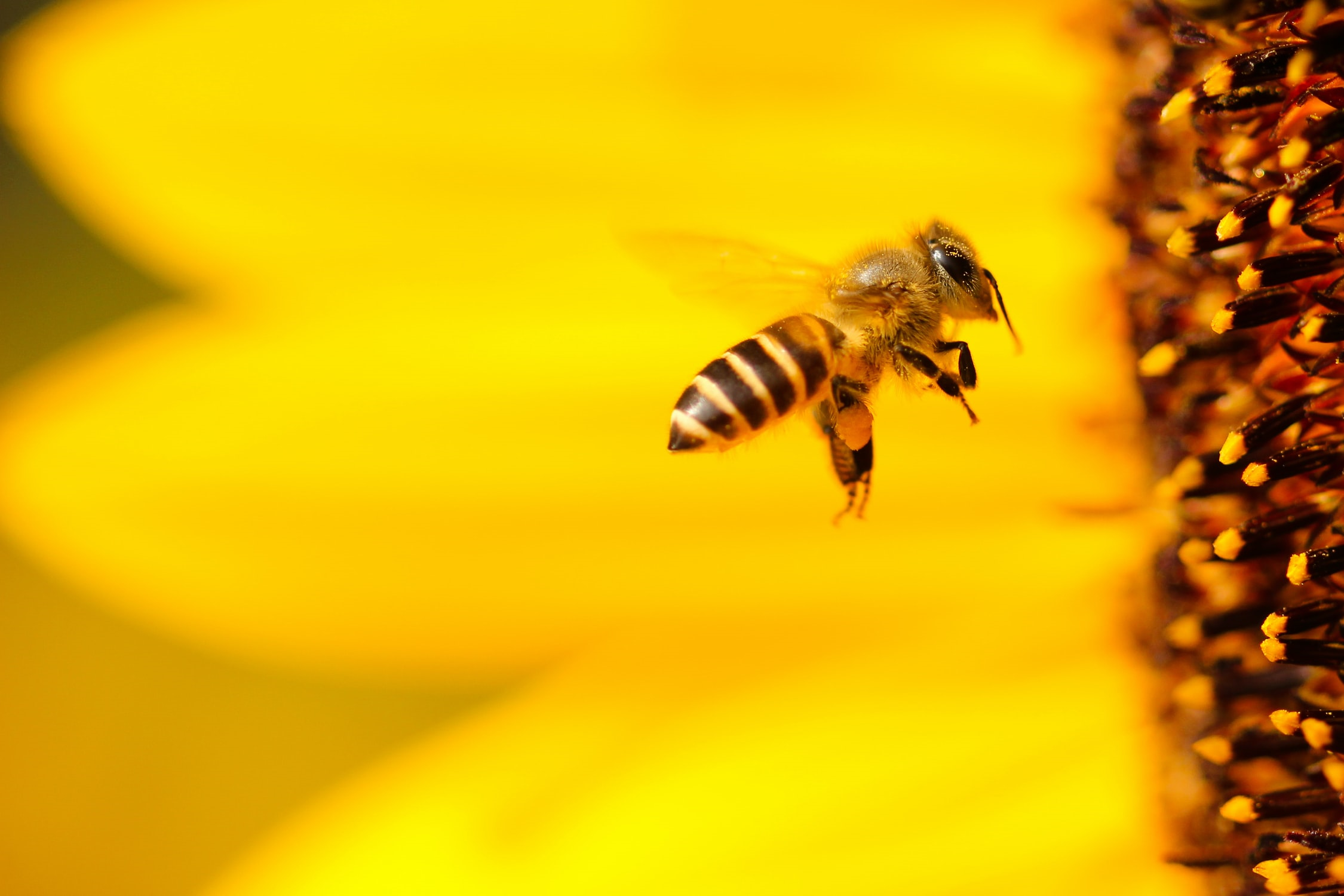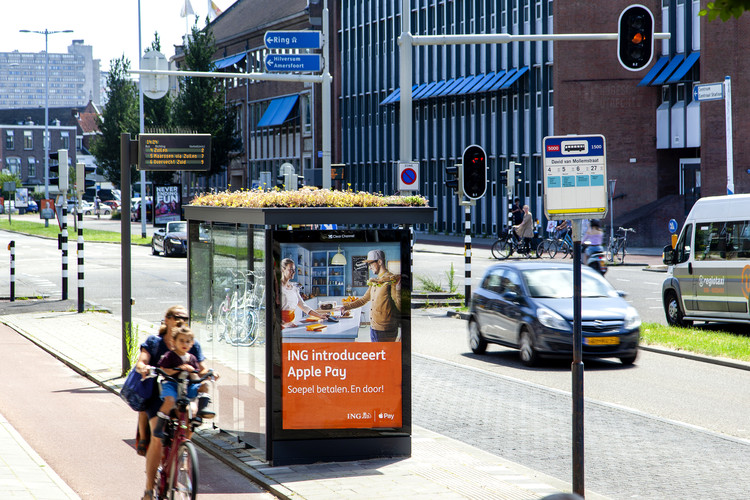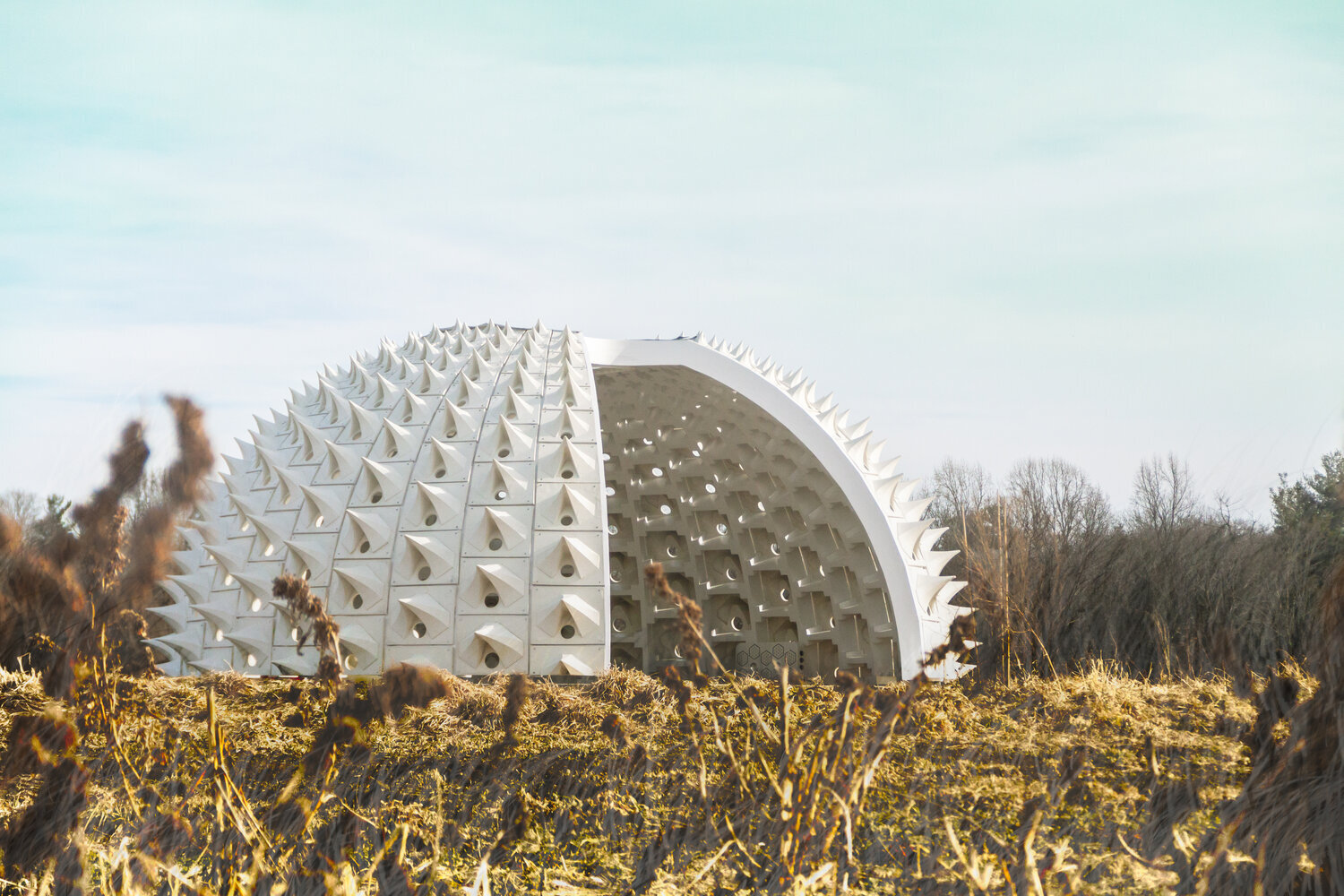To Bee or not to Bee, that is the Question.
The day where only an ominous silence is found over places that should be buzzing is the day we need to pollinate our crops and plants by hand.

When I think about bees and architecture, some of the first images that come to mind are projects that draw inspiration from the structure of beehives. Ole Scheeren adorned the Duo development in Singapore with a honeycomb-patterned façade. And Heatherwick seems to have an affinity with beehives, creating both the Vessel in New York City’s Hudson Yards, and the Learning Hub (also known as the Hive) in Singapore.
Both architects’ design intention and execution in using hives as their design concept, are valid and strong. In the Duo development, the hexagonal frames shade the façade from the sun, keeping it cool. The tower-podium typology also intended to transform the neighbourhood into a bustling, “hive-like” zone. The Vessel is a giant honeycomb-like sculpture in the centre of a large plaza surrounded by skyscrapers, and the Learner’s Hub is a university building that features natural ventilation and open, collaborative spaces.
While these projects are distinct in their own sustainable features, sometimes controversial, and certainly visually impressive - was I the only one who thought they missed out on the chance to include pollinator habitats or spaces where actual bees could nest within their vicinity?
Granted, I imagine clients not being exactly receptive to the idea of having a colony of bees anywhere near their area of development, since insects aren’t likeable to most people. They sometimes bite, sting, transmit diseases and unintentionally scare children and adults alike. But on the other hand, they are also incredibly fascinating and fundamental to life on Earth. And at the beginning of the food chain, on which all of us are ultimately dependent on - are pollinators.

Bats, bees, birds, butterflies, beetles, as well as other pollinators that doesn’t necessarily start with the letter ‘b’, play a vital role in keeping our ecosystems intact and food production running. However, insect numbers are dropping worldwide, creating a rupture in the food chain.
So what should landscape architects do? In the midst of extreme weather events, pollution and exposure to pesticides, how do we promote safe pollinator habitats?
Post-pandemic, urban farms and allotment gardens are increasingly looked at as becoming a crucial part of a community’s food supply. To this end, we can propose pollinator-friendly green roof design instead of the conventional lawn and turf, which has low ecological value. However, this is bearing in mind that not all green roofs are created equal. Green roofs more than 8 storeys above ground will not be able to attract bees or provide nesting resources. Ideally, pollinator habitats can occur at lower podium roofs, where towers are setback, exposing a potential green space that serves as an additional foraging site. Proximity to surrounding habitat patches should also be considered.
To encourage growth of native pollinator species, native planting should be predominantly favoured over exotic species. This helps to establish a habitat that has the needful nutrition and increases chance of reproductive success for local bee species to thrive. It’s a win-win situation since attracting pollinators also help the urban green spaces flourish by increasing cross-pollination and plant reproduction. This in turn welcome other secondary benefits such as carbon sequestration, mitigation of urban heat island effect and stormwater retention.
Perhaps we can be inspired by bee pavilions, or imitate the cities of Utretch and Leicester, who have begun introducing bee-friendly bus stops in response to the climate emergency.


.
Other responses to the multi-faceted challenge of pollinator decline, is to buy local honey from bee conservatories and see how you can start practising “citizen science” by placing bee hotels around you (or even bee bricks!). Contrary to popular belief, most bees are not honeybees and are instead solitary species, living in holes in wood or the ground. Educate yourself to identify local bee species and boycott companies that promote the use of neonicotinoids in pesticides that poison beneficial insects.
In raising awareness of the importance of pollinators, we encourage interest and understanding of the complexity of the environment. Hopefully, there will never come a day where only an ominous silence is found over places that should be buzzing, because that is the day we will need to pollinate our crops and plants by hand.
Stay tuned for an upcoming collaboration in September between SILA and Nutrinest, where founder Mr Xavier Tan shares his beekeeping and conservation journey, as well as first-hand experience with bee hotels in Singapore.
About the author
| Crystal is a Graduate Landscape Architect who completed her Masters in Urban Design at the National University of Singapore. She is passionate about designing cities for high levels of liveability and understanding how cities interact with their environment at the macro and micro scale. In an ideal world, Crystal believes that all systems should be concerned with achieving a sustainable balance and resilient design in the face of climate change. |

